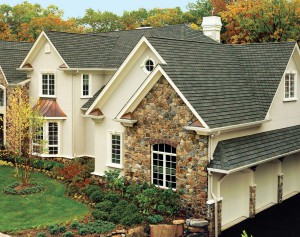Benefits of an Asphalt Roof
There are many options for homeowners when choosing a roofing system. From metal and slate to synthetic and wood. Each solution has particular benefits. Asphalt roofing has been gaining popularity due to its installation ease. However, below are several other benefits can also be considered when choosing a new roof or replacing an existing one.
- Cost-Effective. Due to the production process used by many manufacturers, mass quantities of shingles can be produced quickly and easily. This results in a lower price point than other roofing systems.
- Versatility. Asphalt shingles can adapt to steep angles, unusual shapes and complex forms.
- Color Options. Due to the manufacturing process, they can be made in almost any color to complement and enhance a home’s curb appeal.
- Impact Resistance Rating. Roofing companies may offer shingles that have a Class 4 rating. This is the highest available and can be beneficial in regions that experience rough weather conditions.
- Fire Rating. Asphalt shingles with fiberglass mat foundations can carry the highest fire rating available. The result is improved protection against the possible penetration and spread of a fire.
- Noise Dampening properties. According to a study by The Acoustic Group, an asphalt roofing system can provide superior protection from external sounds, when compared to other solutions.
Easy to install and economical, asphalt shingles can last up to 25 years when properly maintained. The wide selection of vibrant colors, textures and sizes make them suitable for home styles ranging from modern to traditional. Their flexibility and versatility make them an appealing option for homeowners who want durability as well as beauty.
In addition to their long-life expectancy, they typically have fewer leakage problems and offer superior uplift and fire resistance. Unlike heavier systems, asphalt roofing does not require additional support to carry the weight. It is also eco-friendly as the shingles can be recycled at the end of their useful life.

